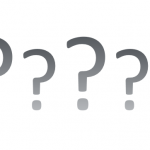Move On When Reading (MOWR) is a policy currently in effect with the intention of preparing students to be proficient readers by 3rd grade so they are properly prepared to enter 4th. This leads to the questions: What is so special about 4th grade? Why is 3rd grade a pivotal year?
Research indicates that:
- The first 3 years of elementary focus on learning to read. After that, the focus is on reading to learn.
- Text and academic standards require a higher and more complex level of reading comprehension beginning in 4th
- Students that cannot read at a level of Proficiency by 3rd grade are more likely to drop out of high school. Students that drop out of high school are more likely to become incarcerated and least likely to attend college or other post high school employment preparation program.
I definitely agree with the last point, but no longer with the first two. I have the benefit of teaching a multi-grade Montessori class (grades 1 – 3) and I have my students for a 3 year cycle. Based on my district’s standards (which are linked to Common Core), students are expected to actively apply reading to learning and complex levels of reading comprehension by 3rd grade, not 4th.
A quick skim of our Arizona reading standards (3rd grade) reveals that by the end of 3rd grade, students will be able to describe the relationship between historical events, distinguish his/her point of view from the authors, determine the meaning of terms based on text, understand word nuances, and so on. Of the 47 standards, only one applies to phonics or learning how to read. The skill is to use phonics to read and decode single and multi-syllable words. It also throws in knowledge of common prefixes, and (Latin) suffixes.
The correct term for the standards is English Language Arts (not “Reading”), and I agree with this as there is little focus on learning to read. It is clear that 3rd grade is a strong reading application year, so students that are not already reading proficiently at the start of 3rd grade are already starting off with a significant deficit.
Looking back at our 2nd grade reading standards, we can see that the 46 standards are also heavily based on English Language Arts, but there is a heavier emphasis on learning how to read. The two standards purely dedicated to reading are loaded with learning how to read skills such as:
- distinguishing long/short vowels
- identify and apply all six syllable types for decoding
- know spelling-sound correspondence
- fluency
- self-correction
After comparing the two years, it seems like 2nd grade is the place where learning to read needs to become solidified before the focus moves to reading to learn.
So what are we to do?
As a teacher with experience in Special Education and Montessori, and as a Social Worker that worked with at risk youth, families, and Juvenile Corrections, I agree with the research that informs the meaningful intentions and short term benefits of retaining a student are not worth the long term consequences. In my opinion, the retention part of MOWR is not the answer.
Sitting on my multi-year perch, I know for a fact that students can learn to read WELL before leaving kindergarten. This includes students with challenging personal/family demographics. Students entering 1st grade knowing how to read will naturally do better. This is common sense. What we may not be as aware of is that it is EASIER for a child to learn how to read by 1st grade when properly supported between the ages of 0-6.
Once the child leaves this stage of natural absorption, reading becomes a skill to be learned which is what can make it difficult for the child and the teacher. It is for this reason that properly funding and supporting early reading programs in schools, daycares, and homes is critical for maximizing the lifelong success and development of the child.
Since the elementary reader has to be explicitly taught, it is our business to ensure that this happens with rigor and urgency (remember…the Proficiency measures are getting higher). It should also be taught in a way that appeals to the child and creates a love for reading. The more the child enjoys reading, the more the child will willingly do it and be naturally open for instruction, comprehension, and skill application.
In the teaching of reading, I suggest go in fully loaded. Partner with parents, Reading Interventionists, community partners, and evidence based approaches such as:
- Response to Intervention (RTI)
- Guided Reading
- Differentiated Instruction
You can take free courses on these skills at Maricopa Coounty Library District.
Resources:









Comments 3
Thank you for your well-researched and well-thought-out response. I couldn’t help but think of all of the different factors that come into play here and the idea of ‘redshirting’ kindergarten. I have two different set of friends who have young ones due to enter kinder next year. One is electing to put their child through preschool for another year. Another is debating sending their child to a half day private school for kinder this coming year and then public the year after that. Obviously, both come at a financial cost that not all can afford, but I use it as a way to illustrate how the pressure of the expectations of the standards at some our early elementary grades is far-reaching
Thank you for your response. I agree and have empathy for your friends. It’s a tough call to make. If we had more universal benefits to quality early education in and outside of the home, their choices would be better and probably easier to make.
As a 2nd grade teacher, I absolutely agree with your statement that 2nd grade is where learning to read needs to become solidified before the focus moves to reading to learn. By the end of 2nd grade, my students need to be able to be able to apply a variety of comprehension skills and strategies and we work hard to get there. It is much easier for us to get there when students come in with strong phonics knowledge and decoding skills, but many do not. I think all primary teachers are feeling the pressure of getting their students to read at grade level before sending them off to the next grade where they will be expected to do even more with reading. Many students are ready for the challenge, but not all ready to read and lack the proper support at home needed to build these critical skills.